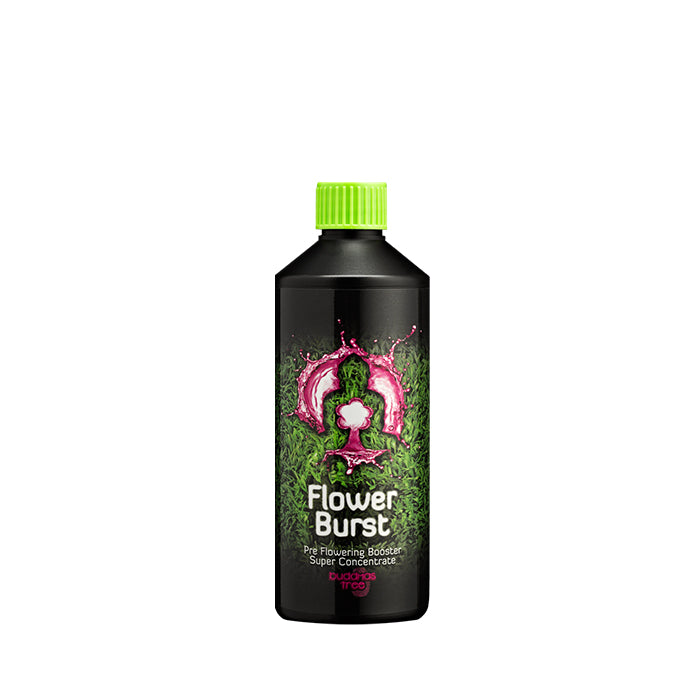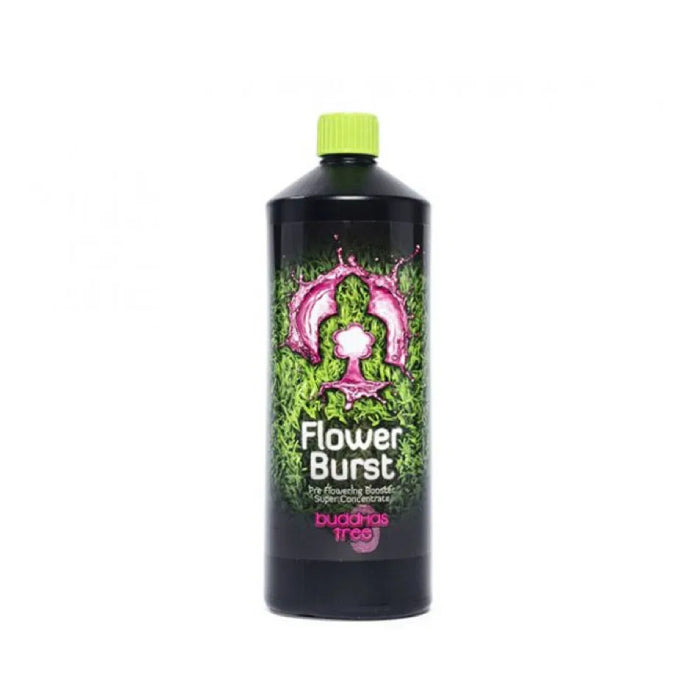Description
BUDDHAS TREE FLOWER BURST
Buddhas Tree Flower Burst is a unique product that’s been specifically developed to be used during the transitional period between the vegetative and bloom cycles to induce and promote explosive growth of pre-flowers before the pure bloom phase is in full swing.
When a plant switches from veg to bloom, so does its nutritional needs, during the first 1-2 weeks, its not uncommon to continue to use Grow nutrients as this early flowering stage can require high levels of Nitrogen (N) which standalone Bloom nutrients don’t feature.
That’s above the pot, but the roots also go through a change that is often overlooked. During early flowering the roots will show accelerated growth so they can maximize the nutrient uptake when the plants demands are high. To help encourage explosive root growth, an abundance of Phosphorus (P) is needed and this is where Buddhas Tree Flower Burst fills the void.
Buddhas Tree Flower Burst has been developed along the same guidelines as their successful PK 9/18 Bloom Boost. It has an NPK ratio of 0-10-8 along with additional Boron to aid Calcium mobilization, an element, like Phosphorus, that is essential for the development of the root zone. This ratio allows it to be used alongside base Grow nutrients to give the plants both the Nitrogen they require above the pot, along with the Phosphorus that the roots require below the pot.
The results are significant as on Buddhas Treet test subjects, those plants that used Flower Burst, pre-flowers were starting to develop up to 4-5 days before the control plants, but also the abundance of flower clusters was increased.
KEY VALUES:
- Encourages root development and flower sites
- Used to aid the transition between the vegetative and flowering cycles
- High in Phosphorus and designed to be used alongside base Grow nutrients
- Added Boron to help with Calcium mobilization
DIRECTIONS OF USE:
Use 0.3ml per litre during weeks 1, 2 and 3 of flowering.





